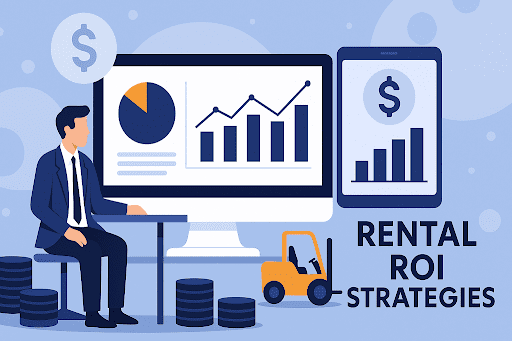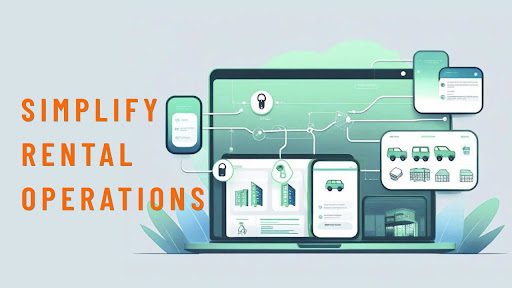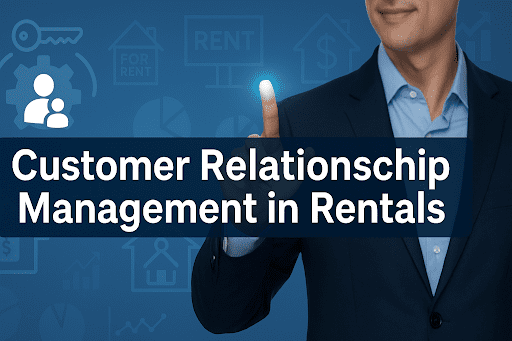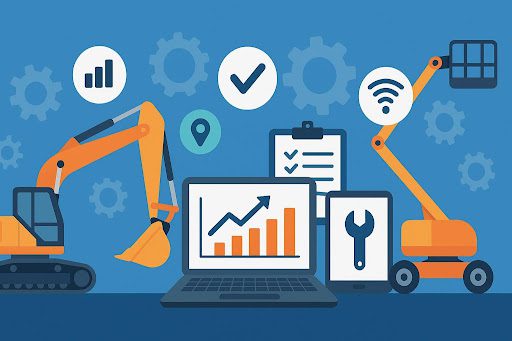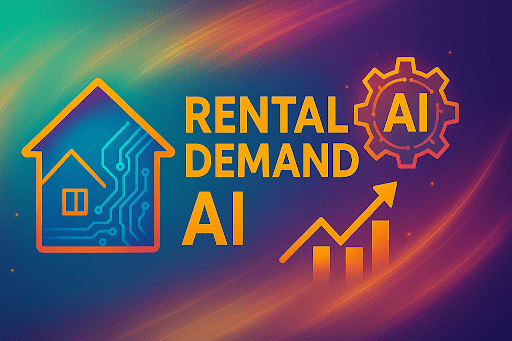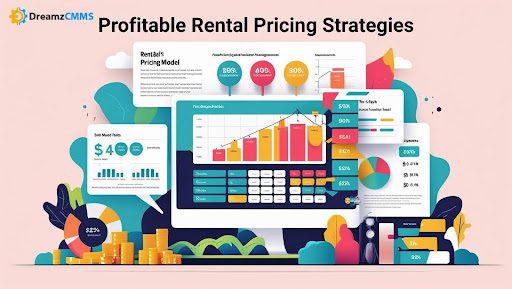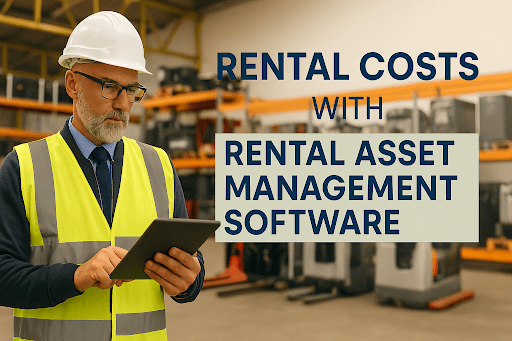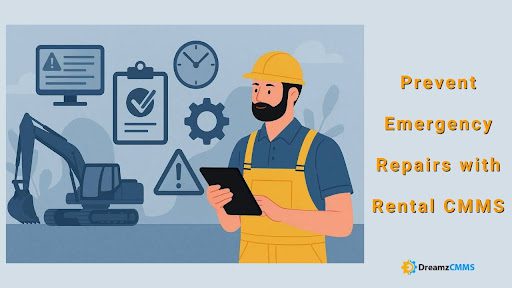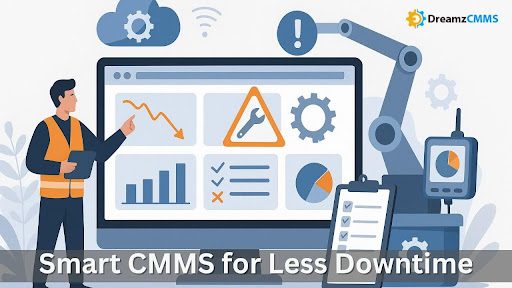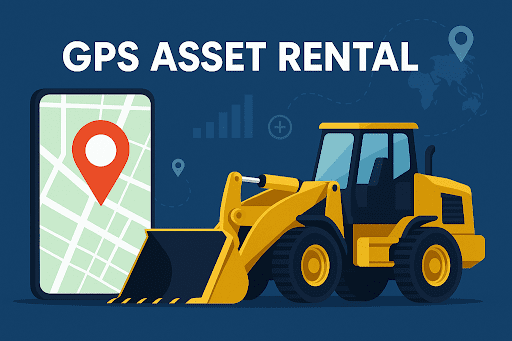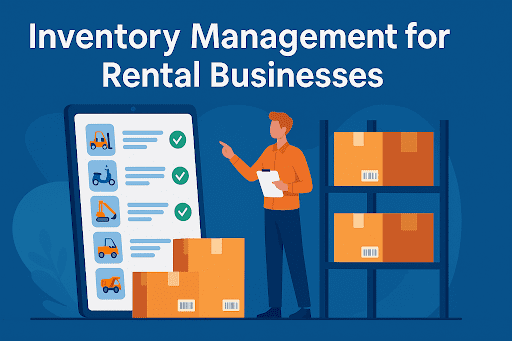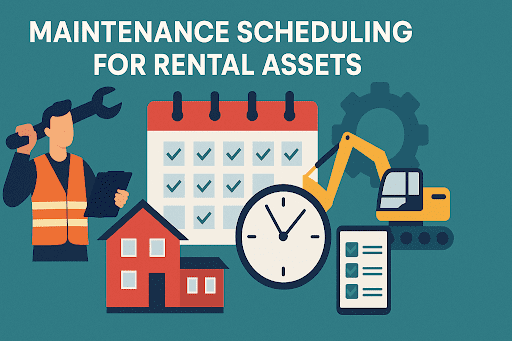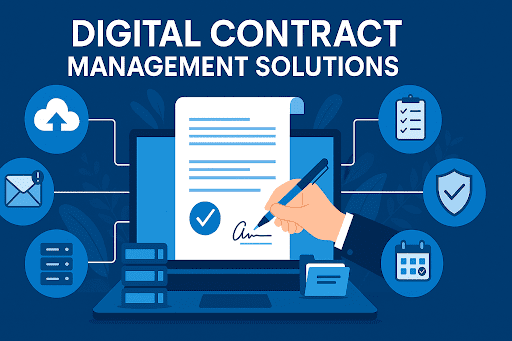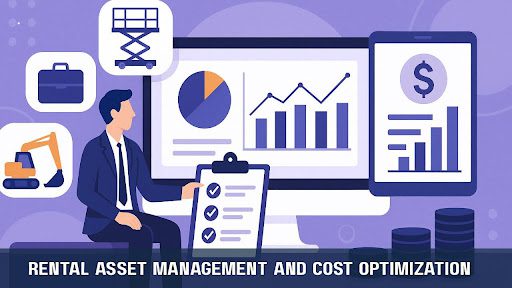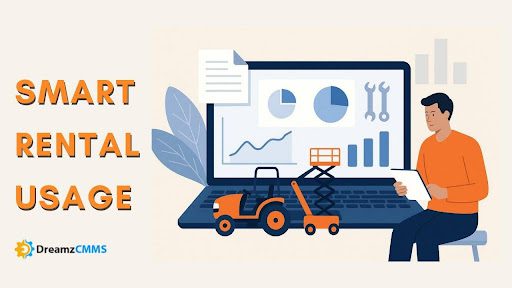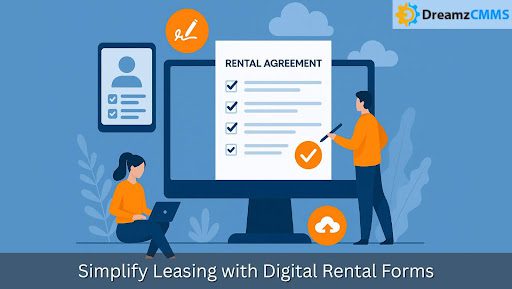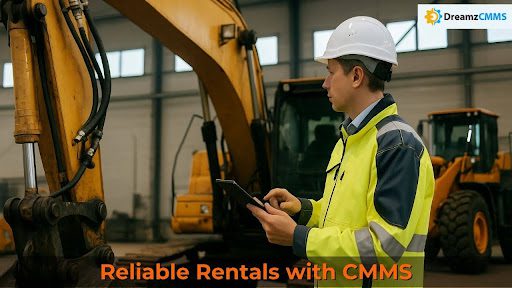 BACK TO Blog
BACK TO Blog
Asset Rental Management
Rental Asset
Rental businesses operate in a highly competitive environment that demands maximum asset utilization rates for achieving higher profitability. Inefficient scheduling together with poor asset tracking and frequent downtime reduce rental returns substantially. The modern rental software for asset ROI has proven itself as a transformative solution because it helps track asset utilization in real-time while optimizing schedules for better asset management. The following analysis demonstrates how rental companies can
- July 30, 2025
- DreamzCMMS Team
- 11 minutes read

- July 30, 2025
- DreamzCMMS Team
- 11 minutes read
Rental businesses operate in a highly competitive environment that demands maximum asset utilization rates for achieving higher profitability. Inefficient scheduling together with poor asset tracking and frequent downtime reduce rental returns substantially. The modern rental software for asset ROI has proven itself as a transformative solution because it helps track asset utilization in real-time while optimizing schedules for better asset management.
The following analysis demonstrates how rental companies can use advanced equipment tracking systems and asset performance management tools to enhance their rental income through efficient resource management.
What Is Asset Utilization Rate?
The Asset Utilization Rate represents an essential performance indicator which determines the effective utilization level of rental assets such as construction equipment and industrial tools during a particular period. Asset utilization rate reveals how many assets are actively producing revenue instead of sitting idle.
Formula for Asset Utilization Rate:
Asset Utilization Rate (%) = (Total Active Usage Hours / Total Available Hours) × 100
The utilization rate of a piece of equipment equals 50% when it operates for 50 hours out of 100 hours of availability. A high asset utilization rate indicates superior productivity monitoring and enhanced asset usage efficiency.
Why Asset Utilization Rate Matters for Rental Businesses
Rental businesses can substantially increase their profitability through asset utilization rate monitoring and improvement. Here’s why it’s important:
- Maximize Rental Returns – Rental returns become maximized when assets operate at peak efficiency because they earn revenue more quickly.
- Reduce Idle Asset Time – The process of identifying underused equipment helps organizations direct it to better utilization opportunities.
- Improve Asset Scheduling – Understanding patterns of demand enables companies to improve their rental scheduling processes.
- Lower Maintenance Costs – The tracking of asset downtime allows organizations to identify equipment that experiences frequent breakdowns so they can perform preventive maintenance.
- Better Investment Decisions – Utilization data serves as a tool to determine which assets should be acquired or which existing assets should be retired from the inventory.
For further guidance on handling typical problems the article Rental Asset Management Challenges explains effective approaches to enhance rental asset operational efficiency.
Rental software plays a crucial role in enhancing the Asset Utilization Rate
Asset tracking methods using spreadsheets and manual logs fail to deliver immediate tracking capabilities. The combination of automation and IoT technology with analytics within rental software for asset ROI creates optimized asset utilization.
1. Real-Time Equipment Usage Tracking
Modern equipment usage tracking software incorporates IoT-enabled sensors or RFID Asset Tracking Software to monitor equipment usage in real-time. This data helps in:
- Monitoring daily operational hours.
- The detection of idle periods enables organizations to decrease the duration of idle assets.
- The comparison between actual usage statistics and predicted usage targets enables organizations to enhance their asset utilization.
Construction rental companies can track assets in real-time to find machines with low usage which enables them to move equipment to high-demand sites.
2. Asset Downtime Tracking
The Asset Utilization Rate suffers when assets experience downtime. Rental software records all downtime occurrences because of maintenance requirements and repair delays as well as scheduling mistakes.
Benefits of Asset Downtime Tracking:
- Predictive maintenance programs help organizations detect persistent equipment failures that require preventive interventions.
- The reduction of unnecessary idle time leads to decreased revenue loss.
- Fast replacement or repair of faulty equipment through asset performance management systems leads to better results.
3. Improve Asset Scheduling
The scheduling process should be optimized to keep assets constantly booked so they spend less time idle. Rental software implements AI-based forecasting models to:
- Predicts when certain equipment will be in high demand.
- The system recommends maintenance periods that do not disrupt rental operations.
- Better asset allocation insights become possible when managing rentals across multiple locations.
Assets remain effective revenue generators because they are not just available but actively producing revenue.
4. Usage-Based Asset Reporting
Rental software produces reports that track each asset's rental activities together with usage duration and performance metrics. These reports serve as essential tools for:
- The analysis of asset performance reveals which equipment produces the highest return on investment.
- Identifying underutilized or obsolete assets.
- Planning asset purchases based on actual demand rather than assumptions.
Check out Inventory Management for Rental Businesses to discover how you can synchronize inventory levels with utilization data for efficient planning.
Key Features of Rental Software That Boost Asset Utilization Rate
Asset Rental Software provides specific features which help optimize asset utilization. The following rental software features optimize asset utilization rates in rental businesses:
1. Asset Productivity Monitoring
The software provides managers with immediate performance assessment through its dashboards which display essential rental metrics. For example:
- Active vs idle time ratios.
- The equipment which produces the highest revenue.
- Assets that require urgent maintenance or replacement procedures.
2. Asset Allocation Insights
Rental software analyzes historical rental data together with demand forecasts to guide asset allocation toward revenue-maximizing locations.
3. Inventory and Asset Optimization
An advanced system integrates inventory and asset optimization, ensuring accessories, spare parts, or attachments are also available for high-demand assets, reducing booking cancellations.
4. Mobile-Friendly Access
Field teams access real-time asset use data through mobile devices which enables them to update asset status and enhance both speed and precision of asset management.
Asset Rental Management Software provides a comprehensive solution to handle your rental lifecycle while improving operations and utilization.
How to Maximize Asset Utilization Rate With Rental Software: Step-by-Step Guide
The Asset Utilization Rate needs an organized strategy to achieve its maximum potential. Rental software tools help track and analyze equipment usage yet success relies on a strategic approach. The following steps will help your assets generate their maximum return on investment:
Step 1: Implement Equipment Usage Tracking Software
Begin by deploying IoT-based or sensor-enabled equipment usage tracking software to track assets in real time. All rental equipment can be tagged with IoT sensors GPS or RFID Asset Tracking Software to enable precise tracking of every asset.
- Why it’s important: The absence of real-time data makes it impossible to identify asset utilization levels which can be excessive or insufficient or completely inactive.
- What to do: Integrate tracking software with your Asset Rental Management Software so all data flows into a centralized dashboard for easier reporting.
- Result: Continuous tracking helps you reduce idle asset time and plan for timely maintenance, improving asset availability.
Step 2: Set Utilization Benchmarks
Each rental equipment category needs specific utilization benchmarks that should be established. High-demand construction equipment requires an Asset Utilization Rate of 80% or higher while seasonal equipment operates at lower targets.
- Why it’s important: Without benchmarks, you can’t measure whether an asset is performing optimally.
- What to do: Historical rental data from your software together with utilization metrics for rentals will help establish achievable targets.
- Result: The establishment of benchmarks enables you to recognize subpar equipment performance thus enabling better decisions regarding equipment maintenance or relocation and replacement.
Step 3: Use Predictive Scheduling
Rental software contains predictive analytics and asset performance management tools which enable proactive maintenance scheduling.
- Why it’s important: Unplanned breakdowns increase downtime and directly impact the Asset Utilization Rate.
- What to do:
- Schedule preventive maintenance during off-peak hours.
- The system uses predictive tools to forecast when maintenance will be required based on observed usage patterns.
- Result: The reduction of maintenance-related downtime combined with higher customer satisfaction leads to maximum rental returns.
Step 4: Analyze Utilization Metrics Regularly
Regularly monitor usage-based asset reporting to understand performance trends.
- Why it’s important:Why it’s important: Early detection of poorly performing or idle assets enables organizations to take corrective actions before these assets turn into unnecessary expenses.
- What to do:
- Generate weekly or monthly utilization reports.
- Compare actual performance with benchmarks.
- Analyzing asset downtime tracking patterns helps organizations resolve recurring problems.
- Result: The analysis of asset usage information at the right time enables better scheduling decisions and obsolete equipment elimination.
Review Inventory Management for Rental Businesses to optimize your equipment selection during high-demand periods.
Inventory Management for Rental Businesses to ensure you always have the right equipment available when demand is high.
Step 5: Optimize Asset Allocation
The correct placement of equipment in appropriate locations at the right times results from smart asset allocation insights.
- Why it’s important: The main reason for asset allocation problems arises from both idle assets in low-demand areas and insufficient supply in high-demand sites.
- What to do:
- The rental software demand forecasting feature enables you to detect locations where bookings peak.
- Underutilized equipment should be moved to locations where bookings are higher.
- Result: By distributing assets across various locations you achieve optimal rental profits and prevent lost business opportunities.
Step 6: Train Teams on Software Use
Advanced rental software remains ineffective when team members fail to utilize its features properly.
- Why it’s important: Incorrect data entry or delayed updates result in inaccurate utilization reports and poor scheduling as well as missed maintenance tasks.
- What to do:
- The software requires employees to receive periodic training about tracking asset use in real-time while updating asset statuses.
- Managers should receive training about understanding rental utilization metrics to make data-based choices.
- Result: Skilled staff ensure accurate data collection, better decision-making, and improved asset productivity monitoring.
Bonus Tip: Integrate Customer Relationship Management (CRM)
The integration of Customer Relationship Management in Rentals with rental software systems helps improve asset utilization. Knowledge of customer booking habits and preferences allows you to forecast demand better while preventing surplus of low-demand assets and maintaining optimal equipment readiness.
Benefits of Maximizing Asset Utilization Rate With Rental Software
1. Maximize Rental Returns
The optimization of rental asset utilization leads businesses to achieve the highest possible revenue from their assets throughout their operational life.
2. Reduce Idle Asset Time
The tracking of asset downtime reveals inactive equipment so you can either redistribute or remove unproductive assets.
3. Improve Decision-Making
Accurate rental utilization metrics provide managers with data-driven tools to support their investment and scheduling choices.
4. Enhance Customer Satisfaction
A well-planned and properly maintained asset delivery schedule helps reduce delays which enhances customer trust.
5. Lower Operational Costs
The optimization of assets helps businesses cut down expenses related to maintenance as well as storage and transportation costs.
For information about rental businesses enhancing customer satisfaction through CRM systems read Customer Relationship Management in Rentals.
Future Trends in Asset Utilization Rate Optimization
The advancement of asset productivity monitoring and utilization optimization depends on sophisticated technological solutions:
1. AI-Driven Demand Forecasting
The implementation of artificial intelligence will forecast asset requirements by analyzing historical data along with seasonal patterns for enhanced scheduling practices.
2. Predictive Maintenance Integration
Asset performance management will become smarter through AI-driven predictive maintenance which minimizes equipment downtime.
3. Blockchain for Secure Usage Data
The implementation of blockchain technology enables secure tamper-proof usage-based asset reporting for multi-party rentals while providing transparency.
4. Augmented Reality (AR) for Maintenance
The implementation of AR-guided repair instructions by technicians will shorten maintenance periods while increasing equipment availability.
Best Practices to Sustain a High Asset Utilization Rate
A high Asset Utilization Rate demands permanent surveillance together with forward-thinking asset management. Here are quick best practices:
1. Monitor Real-Time Metrics
The tracking of real-time asset use becomes possible through IoT or RFID Asset Tracking Software. Set up alerts for equipment that remains idle or does not perform well to enable swift asset reassignment and minimize time spent on idle assets.
2. Adopt Preventive Maintenance
Asset performance management tools enable predictive analytics for proactive maintenance scheduling. The implementation of preventive maintenance practices extends equipment lifespan while minimizing breakdowns to enhance rental asset utilization.
3. Regularly Update Software
The continuous update of your equipment usage tracking software and Asset Rental Management Software will deliver AI-driven demand forecasting and usage-based asset reporting capabilities.
4. Evaluate Asset ROI Periodically
The assessment of rental revenue against operational expenses and maintenance costs is essential. The evaluation of rental utilization data helps organizations determine the fate of underperforming assets by deciding between maintenance or replacement or asset disposal.
5. Train Staff Continuously
Staff training performed on a regular basis enables staff to enter data correctly and schedule tasks properly as well as maximize asset allocation insights and asset productivity monitoring features.
6. Leverage Customer Insights
The integration of Customer Relationship Management in Rentals provides demand forecasting and scheduling improvements which ensure high-demand assets remain accessible.
Conclusion
Modern rental businesses must treat Asset Utilization Rate optimization as a strategic requirement because it directly affects their rental return performance. Rental businesses can achieve better asset productivity monitoring along with reduced idle asset time by using modern rental software to generate data-driven decisions through usage-based asset reporting.
The appropriate technology enables businesses to track equipment usage in real-time and monitor asset downtime to prevent maintenance delays and perform predictive scheduling to enhance asset scheduling which results in better inventory optimization and increased profitability.Your success depends on investing in advanced Asset Rental Management Software and RFID Asset Tracking Software to achieve better rental asset utilization and obtain meaningful asset allocation insights.
Ready for More?
Talk to one of our CMMS experts and see how DreamzCMMS can simplify your maintenance operations.
Book a free consultation